To Kill a Mockingbird
4.7
-
135,849 ratings
The unforgettable novel of a childhood in a sleepy Southern town and the crisis of conscience that rocked it, To Kill A Mockingbird became both an instant bestseller and a critical success when it was first published in 1960. It went on to win the Pulitzer Prize in 1961 and was later made into an Academy Award-winning film, also a classic.
Compassionate, dramatic, and deeply moving, To Kill A Mockingbird takes readers to the roots of human behavior - to innocence and experience, kindness and cruelty, love and hatred, humor and pathos. Now with over 18 million copies in print and translated into forty languages, this regional story by a young Alabama woman claims universal appeal. Harper Lee always considered her book to be a simple love story. Today it is regarded as a masterpiece of American literature.
Set in the small Southern town of Maycomb, Alabama, during the Depression, To Kill a Mockingbird follows three years in the life of 8-year-old Scout Finch, her brother, Jem, and their father, Atticus--three years punctuated by the arrest and eventual trial of a young black man accused of raping a white woman. Though her story explores big themes, Harper Lee chooses to tell it through the eyes of a child. The result is a tough and tender novel of race, class, justice, and the pain of growing up.
Like the slow-moving occupants of her fictional town, Lee takes her time getting to the heart of her tale; we first meet the Finches the summer before Scout's first year at school. She, her brother, and Dill Harris, a boy who spends the summers with his aunt in Maycomb, while away the hours reenacting scenes from Dracula and plotting ways to get a peek at the town bogeyman, Boo Radley. At first the circumstances surrounding the alleged rape of Mayella Ewell, the daughter of a drunk and violent white farmer, barely penetrate the children's consciousness. Then Atticus is called on to defend the accused, Tom Robinson, and soon Scout and Jem find themselves caught up in events beyond their understanding. During the trial, the town exhibits its ugly side, but Lee offers plenty of counterbalance as well--in the struggle of an elderly woman to overcome her morphine habit before she dies; in the heroism of Atticus Finch, standing up for what he knows is right; and finally in Scout's hard-won understanding that most people are essentially kind "when you really see them." By turns funny, wise, and heartbreaking, To Kill a Mockingbird is one classic that continues to speak to new generations, and deserves to be reread often. --Alix Wilber
Kindle
$11.99
Available instantly
Audiobook
$0.00
with membership trial
Hardcover
$19.93
Mass Market Paperback
$17.97
Ships from
Amazon.com
Payment
Secure transaction
ISBN-10
0446310786
ISBN-13
978-0446310789
Print length
384 pages
Language
English
Publisher
Grand Central Publishing
Publication date
October 10, 1988
Dimensions
6.69 x 4.13 x 0.98 inches
Item weight
7.1 ounces
Popular Highlights in this book
Until I feared I would lose it, I never loved to read. One does not love breathing.
Highlighted by 12,405 Kindle readers
Mockingbirds don’t do one thing but make music for us to enjoy. They don’t eat up people’s gardens, don’t nest in corncribs, they don’t do one thing but sing their hearts out for us. That’s why it’s a sin to kill a mockingbird.
Highlighted by 9,484 Kindle readers
“People in their right minds never take pride in their talents,” said Miss Maudie.
Highlighted by 7,648 Kindle readers
Product details
ASIN :
B00K0OI42W
File size :
2283 KB
Text-to-speech :
Enabled
Screen reader :
Supported
Enhanced typesetting :
Enabled
X-Ray :
Enabled
Word wise :
Enabled
Award Winners:
Editorial Reviews
"Marvelous . . . Miss Lee's original characters are people to cherish in this winning first novel."―The New York Times
"A novel of great sweetness, humor, compassion, and of mystery carefully sustained."―Harper's Magazine
"Skilled, unpretentious and tototally ingenuous . . . tough, melodramatic, acute, funny."―The New Yorker
"Miss Lee wonderfully builds the tranquil atmosphere of her Southern town, and as adroitly causes it to erupt a shocking lava of emotions."―San Francisco Examiner
"Remarkable triumph . . . Miss Lee writes with a wry compassion that makes her novel soar."―Life magazine
Sample
1
When he was nearly thirteen, my brother Jem got his arm badly broken at the elbow. When it healed, and Jem’s fears of never being able to play football were assuaged, he was seldom self-conscious about his injury. His left arm was somewhat shorter than his right; when he stood or walked, the back of his hand was at right angles to his body, his thumb parallel to his thigh. He couldn’t have cared less, so long as he could pass and punt.
When enough years had gone by to enable us to look back on them, we sometimes discussed the events leading to his accident. I maintain that the Ewells started it all, but Jem, who was four years my senior, said it started long before that. He said it began the summer Dill came to us, when Dill first gave us the idea of making Boo Radley come out.
I said if he wanted to take a broad view of the thing, it really began with Andrew Jackson. If General Jackson hadn’t run the Creeks up the creek, Simon Finch would never have paddled up the Alabama, and where would we be if he hadn’t? We were far too old to settle an argument with a fist-fight, so we consulted Atticus. Our father said we were both right.
Being Southerners, it was a source of shame to some members of the family that we had no recorded ancestors on either side of the Battle of Hastings. All we had was Simon Finch, a fur-trapping apothecary from Cornwall whose piety was exceeded only by his stinginess. In England, Simon was irritated by the persecution of those who called themselves Methodists at the hands of their more liberal brethren, and as Simon called himself a Methodist, he worked his way across the Atlantic to Philadelphia, thence to Jamaica, thence to Mobile, and up the Saint Stephens. Mindful of John Wesley’s strictures on the use of many words in buying and selling, Simon made a pile practicing medicine, but in this pursuit he was unhappy lest he be tempted into doing what he knew was not for the glory of God, as the putting on of gold and costly apparel. So Simon, having forgotten his teacher’s dictum on the possession of human chattels, bought three slaves and with their aid established a homestead on the banks of the Alabama River some forty miles above Saint Stephens. He returned to Saint Stephens only once, to find a wife, and with her established a line that ran high to daughters. Simon lived to an impressive age and died rich.
It was customary for the men in the family to remain on Simon’s homestead, Finch’s Landing, and make their living from cotton. The place was self-sufficient: modest in comparison with the empires around it, the Landing nevertheless produced everything required to sustain life except ice, wheat flour, and articles of clothing, supplied by river-boats from Mobile.
Simon would have regarded with impotent fury the disturbance between the North and the South, as it left his descendants stripped of everything but their land, yet the tradition of living on the land remained unbroken until well into the twentieth century, when my father, Atticus Finch, went to Montgomery to read law, and his younger brother went to Boston to study medicine. Their sister Alexandra was the Finch who remained at the Landing: she married a taciturn man who spent most of his time lying in a hammock by the river wondering if his trot-lines were full.
Read more
About the authors
Harper Lee
Harper Lee was born in 1926 in Monroeville, Alabama. She attended Huntingdon College and studied law at the University of Alabama. She is the author of the acclaimed To Kill a Mockingbird, and was awarded the Pulitzer Prize, the Presidential Medal of Freedom and numerous other literary awards and honours. She died on 19 February 2016.
Reviews
Customer reviews
4.7 out of 5
135,849 global ratings
Reading Reney
5
A Classic of Literature
Reviewed in the United States on January 28, 2024
Verified Purchase
You're familiar with the basic story and maybe you read it long ago. You know the book is a classic and you remember seeing the movie as a child. But have you ever sat down and just appreciated this novel for the wonderful story that it truly is? This is story about racism, culture and societal expectations. But, most of all, it is a story about integrity and doing the right thing.
The story is set in the South: the town of Maycomb, Alabama in the 1930's. A place where white people have roles and black people have rules. This is where the great Atticus Finch is raising his two children - Jeremy (Jem) and Jean Louise (Scout). Although he is a widow, he does have the help of a servant named Calpurnia who is a cherished part of the family. Atticus is a public defender and serves on the State Legislature. He is a highly-educated and thoughtful man dedicated to his town, his neighbors, his family - and justice. His motto: "You never really understand a person until you consider things from his point of view - until you climb into his skin and walk around in it."
The story, however, is not told from his perspective, but from that of his daughter, Scout who is around 5 or 6 when the story begins and about 10 or so in its closing scenes. Through her eyes, we get innocence mixed with a precociousness and the wry sense of humor she has inherited from her dad. He's a lawyer and he asks a lot of questions. Sometimes he asks them when he already knows the answer and so does Scout. Atticus is always straight-forward about answering her. Jem tries his best with her, but he is also very young at the time and trying to find his way of fitting in as well.
The first few pages introduce a cast of characters and are somewhat challenging to get into. Best to relax and just enjoy the ride - it will all come clear as the story unfolds. Remember you are being introduced by a small child. The action starts soon enough, as Atticus is assigned to defend a black man accused of raping a white woman. The scenes leading up to and within the courthouse during the trial are brilliant and evoke so much emotion as you "climb into another's skin and walk around in it". The writing is so vivid and the characters really come alive. Your heart wants one verdict even though your head knows it's going to be another. The town gets past the trial and life goes on; or does it? Unfortunately, not for everyone. The ending is incredible and will not leave you for a long time to come.
I read this book as part of a banned book project and I thoroughly enjoyed it! I fell in love with Atticus Finch and Scout and I hope to become a better person for it! I'm glad when young people review this book and are shocked by what the world offered in 1935. That helps me understand that times are indeed changing despite still having a way to go!
Read more
31 people found this helpful
Glenn
5
A Look Into Our Soul
Reviewed in the United States on September 2, 2015
Verified Purchase
If ever there were a book I would consider voting for as the “Great American Novel”, Harper Lee’s To Kill a Mockingbird is the one…the only one. It is hard for me to say that there is a one great anything. Times change, technology improves, and social views evolve. In short, we are never the same from one generation to the next and trying to pick anything that spans the gap and the differences as the greatest of all is difficult, if not a complete waste of time.
When it comes to literature, there are so many fine books and so many great writers that trying to narrow the selection to the “one great one” interferes with valuable reading time…generally. But then there is To Kill A Mockingbird.
Harper Lee’s story takes place in the small southern Alabama town and county of Maycomb during the depression era 1930’s. She paints a picture of the community and the people populating it through the eyes of Scout (Jean Louise Finch) the daughter of a prominent local attorney, Atticus Finch. As the book opens, Scout is preparing to begin her first year in grade school.
She and her brother Jem and friend Dill pass the summer doing the things children did before the age of video games and twenty-four hour television. They played. They entertained themselves. They went on adventures. They told stories about the frightening, recluse who lives on the corner. They were children.
They did all of this under the watchful eyes of Calpurnia, the black woman who is housekeeper and surrogate mother to the family. Scout describes her as “all angles and bone…with a hand as wide as a bed slat and twice as hard…”
In the Finch household, Cal is treated as an equal, a partner in the upbringing of the children and an indispensable member of the family. That is in the Finch household. Outside their small world, things are different in the community of Maycomb.
I find Calpurnia to be one of the most interesting of characters in the story. She is a strong and independent black woman who makes her way in the world dominated by whites. Scout is amazed on one occasion when visiting at Cal’s church that she spoke differently to other blacks, using their particular colloquialisms and dialect. It was very different from the way she spoke with Scout and Jem in the Finch home. Scout had no idea that Calpurnia lived this “double life” relating differently to the two cultures in Maycomb.
In short, racial prejudice reigns, as was common in the time. Blacks, Negroes as polite members of the community called African Americans in that day, are second-class citizens with a place in the universe of Maycomb that is always inferior to the whites. Even the most white-trashy, ignorant, slovenly of whites holds a place in the community superior to any of the blacks.
As a southerner who grew up in the south in the 1950s, I remember the “Jim Crowe” days. I went to schools that were not desegregated. I saw white only water fountains and restrooms. Black children were to be treated kindly, but we did not associate as a rule. They had their world. We had ours.
As Scout paints a picture of Maycomb through the experiences she shares with Jem and Dill, it begins as a sort of “Mayberry-esque”, idyllic memoir of her childhood. But events open her eyes to the underlying darkness of their culture. Maycomb is not the perfect little world she thought.
She is guided by her father, Atticus, through the twisting cultural maze she inhabits. He teaches her not to judge others, but to get in their shoes and walk around a while to see how the world looks from their perspective. Most importantly, never kill a mockingbird because all they do is sing and bring happiness without harming anyone else. Atticus is the rock in Scout's world, giving her rope to explore and float about on the sea, but always there to anchor her safely.
Brother Jem (short for Jeremy) and friend Dill are her conscience and mentors in a way. Dill, rambunctious but sensitive, opens her eyes to things she had missed in their small community. Jem, sees and struggles with the contradictions around them...white people they have known all their lives as good people, doing things and saying things that they know to be wrong.
Through her innocence and confused effort to understand what is happening around her, we see that things are socially complicated. Whites harboring racial prejudice are not all evil as Scout describes their interactions. Instead, you get the feeling that they are ignorant, not seeing the contradictions in their lives, one instant treating a black member of the community in a courteous friendly manner, the next making sure they understand their place in the community…second class.
Some, however, are evil. The Ewells are the evilest of them all. Their conflict with Atticus and his defense of a black man, Tom Robinson, accused but innocent of a terrible crime leads to a chilling climax in the concluding chapters.
In the event that there is someone who has not read the book or seen the movie, I will not include any plot spoilers here. Just know that it is a gripping story with a conclusion that keeps you on the edge of your seat before Lee allows you to take a breath in the final chapter.
The prose is superb. The story is engaging and riveting. There are moments that will make you smile, others that will make you angry and some that might bring tears to your eyes.
Most of all, Harper Lee’s use of a little girl, Scout, to bring the narrative to life is masterful. It is not a children’s book, but through the eyes of a child, we see ourselves and the world around us. For me, that is why To Kill A Mockingbird is the great American novel. It spans the gap of generations, and through Scout’s eyes, looks into our soul.
Read more
27 people found this helpful
Howabout1337
5
My Review
Reviewed in the United States on October 30, 2023
Verified Purchase
Harper Lee's 'To Kill a Mockingbird' is a literary gem that captures the essence of a sleepy Southern town, offering a profound exploration of human behavior and the moral crisis that shook its foundations. Published in 1960, this novel swiftly became an instant bestseller, receiving critical acclaim and earning the Pulitzer Prize in 1961. Its subsequent adaptation into an Academy Award-winning film solidified its place as a classic in both literature and cinema.
The narrative of 'To Kill a Mockingbird' is an eloquent portrayal of the dichotomies within human nature - from innocence to experience, kindness to cruelty, love to hatred, humor to pathos. Set against the backdrop of a small Alabama town, the story encapsulates the complexities and struggles of the human condition.
Harper Lee's storytelling is at once compassionate, dramatic, and deeply moving. Through the perspective of Scout Finch, the young protagonist, the novel offers a poignant examination of societal injustices, racial prejudice, and the moral conflicts that challenge the town's moral fabric.
The timeless appeal of 'To Kill a Mockingbird' is evidenced by its widespread success, with over 18 million copies in print and translations into forty languages. Lee's ability to capture the essence of human relationships and societal dynamics makes this regional story universally relevant.
Originally regarded by its author as a simple love story, 'To Kill a Mockingbird' has evolved into a masterpiece of American literature. Its enduring relevance and impact lie in its ability to engage readers across generations, inviting contemplation on timeless themes such as justice, empathy, and the struggle between right and wrong.
The characters, particularly the iconic Atticus Finch, have left an indelible mark on the literary landscape. Atticus's unwavering moral compass and his dedication to justice remain a beacon of integrity and moral righteousness.
While the book tackles weighty themes, it does so with grace and subtlety, inviting readers to reflect on the nuances of life and the intricacies of human behavior.
'To Kill a Mockingbird' is a timeless classic that stands as a testament to the enduring power of storytelling. Its narrative remains as relevant today as it was upon its initial publication, continuing to prompt reflection and conversations on the complexities of human morality.
I rate 'To Kill a Mockingbird' with five stars for its masterful storytelling, poignant exploration of human nature, and its unwavering impact on literature and society. Harper Lee's work remains an essential read for those seeking a deeper understanding of the human experience.
Read more
15 people found this helpful
BOB
5
Boo Radley, Tom Robinson and other mockingbirds
Reviewed in the United States on July 20, 2015
Verified Purchase
I have to confess to a certain degree of ignorance regarding many of the details of this book, primarily due to the fact that the film version has become so pervasive in my memory, as well as many of the general population, that it has overshadowed the original novel. I say this after reading the novel for the third time, the second having been 18 years ago. This reading has occurred since the recent publication of its prequel/sequel 'Go Set a Watchman' so I have had the experience of reading them back to back with a fresh comparison.
The novel, like the film, has a seemingly random, anecdotal quality to much of it, weaving around the double threads of the curiosity of the children toward Arthur (Boo) Radley and the trial of Tom Robinson. Like any film adapted from a novel, the film 'To Kill a Mockingbird' had to be selective in which anecdotes to leave out and which ones to include.
Fifty-five years after its original publication and 53 years after the film version, a summary of the novel seems superfluous so I will proceed on the assumption that everyone has been exposed to the novel, the film or both. Assuming that familiarity, the rest of the review will largely consist of my new perceptions of portions I had forgotten or connections I had not made until this reading.
The novel takes place over a span of three years, from 1932 to 1935 and in that time Scout's brother Jem makes a transition from child to adolescent while Scout moves from first to third grade. They are not constant in their perceptions of their small-town world. There is much room to grow and so the revelations do not seem to occur as rapidly as the film version would indicate. Scout has more of an inkling of what the Robinson trial is about as a third grader than she would have had if it occurred at the beginning of the novel. The spooky imagined exploits of childhood boogeyman Boo Radley that consumes the children and their playmate Dill at the beginning has receded into mere curiosity about an extremely reclusive character.
I had forgotten, for example, that Aunt Alexandra moves in with the family toward the beginning of the novel because Atticus knows that they need more adult attention than he is able to give them at this time. He probably also feels that they could benefit from a female presence in the house. According to Scout, they already have a female presence—their black housekeeper/cook Calpurnia. She keeps the household running smoothly and does her best to ensure that the children stay out of mischief. She doesn't live with them 24/7 though and she is black. She is also not a blood relation. Alexandra's presence is felt throughout the rest of the novel, although she doesn't strike me as quite as shrewish as she does in 'Go Set a Watchman,' partially because in that novel she treats the adult Jean Louise almost identically to the child Scout.
Alexandra's presence in the house does bring Scout closer to Calpurnia, whom she sees as too much of a strict disciplinarian at the beginning of the novel, yet in comparison to Alexandra, she actually takes the trouble to try to understand the child's point of view. As talk of the impending trial of Tom Robinson reaches the children through the taunts of children as well as raving adults such as Mrs. Dubose, Cal's feelings on the matter are not lost on Scout. As she attempts to understand Atticus's willingness to defend a black man and not respond to the racial slurs that are tossed at him, she gets a first-hand look at the other side of the racial fence when she goes with Cal to her own church. Cal defends her decision to bring a white girl to a black church to some of the black counterparts to Mrs. Dubose and Scout respects her for her courage in going against the tide of what is expected in THAT society. Cal's pastor Reverend Sykes welcomes her and this familiarity also informs his easy reception of her, Jem and Dill to the 'colored only' balcony of the courthouse for the Robinson trial.
I had also forgotten that Atticus's younger brother, Uncle Jack, appears, scolding Scout at a Christmas gathering for using unsuitable language and hitting her cousin for calling Atticus the unmentionable 'n—lover'. When Scout scolds him politely for not giving her a chance to tell her side of the story, he relents and understands why she got so upset.
Another character I didn't recall is the white businessman Dolphus Raymond. He lives with a black mistress and has spawned several mulatto children. He is seen by the society of Maycomb as a scandalous, immoral eccentric. Scout understands him a bit more after she is taken out of the courthouse with Dill after Dill's crying fit over the racist treatment of the prosecuting attorney to Tom Robinson, encounters Raymond and learns that the liquid he drinks out of the container within his paper sack is not whiskey, as everyone suspects, but Coca-Cola. Scout asks him why he pretends, to which he says:
"I try to give 'em a reason, you see. It helps folks if they can latch onto a reason. When I come to town, which is seldom, if I weave a little and drink out of this sack, folks can say Dolphus Raymond's in the clutches of whiskey—that's why he won't change his ways. He can't help himself, that's why he lives the way he does….It ain't honest but it's mighty helpful to folks. Secretly, Miss Finch, I'm not much of a drinker, but you see they could never, ever understand that I live like I do because that's the way I want to live."
He says he confides in children because they are still young enough to understand him, because they 'cry about the simple hell people give other people without even thinking. Cry about the hell white people give colored folks, without even stopping to think that they're people too."
Another realization I had with this reading is that Atticus is not the sole advocate for equal treatment regardless of race. Their neighbor Miss Maudie Atkinson tells them that there are certain people we hire to do our unpleasant jobs for us and their father is one of them. She is certainly one of the more racially enlightened citizens of the town. As they find out, a white person who believes in treating black people equally must live closeted lives. They learn that Judge Taylor chose Atticus intentionally to be the defense attorney rather than the man that would ordinarily be chosen. Sheriff Heck Tate must maintain order as a lawman and yet he too knows that Tom is innocent and he is sensitive enough to the reclusive Boo to persuade Atticus to 'let the dead bury the dead'. In this town Atticus and Dolpus Raymond are the most uncloseted of the white non-racists in the town.
The novel proceeds in its almost effortless, anecdotal way to reveal steadily stronger moral lessons for both Jem and Scout but particularly for Scout, culminating in the most intense encounter with Bob Ewell and the emergence of Boo Radley. It is easy to see how it earned its classic status. It presents such a clear, articulate and incontrovertible statement regarding racial equality and unequivocal respect for all living things (Jem even adopts a stance of not even crushing insects) that is universal and is why it can still move millions of readers 55 years after its publication. Its success and influence even provided a lesson in tolerance for the real-life model for Atticus, A.C. Lee.
Read more
44 people found this helpful
Frank N.
4
Undisputed classic
Reviewed in the United States on May 10, 2017
Verified Purchase
‘You never really understand a person until you consider things from his point of view... Until you climb inside of his skin and walk around in it.’
Harper Lee’s To Kill A Mockingbird is an undisputed classic that few will avoid having read in their lifetime, and those few are to be pitied. As I habe presentation of the novel coming up this weekend, a discussion group that I am lucky enough to be allowed to lead as part of the The Big Read here in Holland, Michigan, I felt it necessary to revisit this timeless classic (and I figured I’d review it to help collect my thoughts on the subject). The experience was like returning to a childhood home and finding it warm and welcoming and undisturbed from the passage of time, like walking the streets of my old neighborhood and hearing the calls of friends as they rode out with their bikes to greet me, of knowing the mailman by name and knowing where all the best places for hide-and-seek were, the best trees to climb, and feeling safe and secure in a place that is forever a part of yourself. Though some of the mechanics of the novel seemed less astonishing than my first visit more than a decade ago, the power and glory was still there, and I found a renewed love and respect for characters like Atticus, whom I’ve always kept close to heart when wrestling with my own position as a father. Harper Lee created a wonderful work that incorporated a wide range of potent themes, wrapping class systems, gender roles, Southern manners and taboos, and an important moral message of kindness, love and conviction all within a whimsical bildungsroman that no reader who has been graced by its pages will ever forget.
‘The one thing that doesn't abide by majority rule is a person's conscience.’
Before dipping into the novel itself, I’d like to take a moment to speak about Atticus Finch, one of my favorite characters in all of Literature. Atticus is a pillar of morality, a man of honor, integrity, and most importantly, conviction. He is humble and honest, even admitting to his children that yes, indeed they are poor. In a novel about society, with its tumultuous mess of morals and class, Atticus is like an authorial deus ex machina, being Lee’s method of inserting moralizing and an example of what constitutes a ‘good man’ into the book through character and not authorial asides. I’ve always idolized Atticus and tried to think ‘what would Atticus do?’ when it come to being a father and undertaking difficult moral conundrums (I even named my second cat Catticus Finch). Atticus takes the unpopular position of defending a black man in a rape case when assigned to him despite the town nearly ostracizing him. Atticus does his duty, and does it well, as a man of conviction that believes in doing what is right and honorable regardless of the consequences, living up to his statement that ‘Real courage is when you know you're licked before you begin, but you begin anyway and see it through no matter what’. In fact, Lee originally intended to name the novel Atticus before deciding it would stifle the broad perspective of Macomb by drawing too much attention to one character. Atticus remains steadfast throughout the novel, sure of himself and fully developed, whereas those around him undergo more a sense of change and development. This is a novel about personal growth and a broader understanding of those around you, and Atticus is the anchor to integrity and morality keeping his children centered in the violent storm of emotions and violence that befalls Macomb.
‘When a child asks you something, answer him, for goodness sake. But don't make a production of it. Children are children, but they can spot an evasion faster than adults, and evasion simply muddles 'em.’
There is a childlike innocence spun through a novel of such weight and seriousness, executed brilliantly by Lee’s choice of Scout as the narrator. We are forever seeing a larger world through the eyes of a young girl still trying to find her place in it while making sense of all the hustle and bustle around her, and this creates an incredible ironic effect where there are large events going on that the reader understands but are delivered nearly through defamiliarization because the narrator cannot fully grasp them¹. The narration allows Lee to balance the coming-of-age hallmarks with the weightier themes, allowing the reader to maintain an innocence from the rape and racism while still able to make sense of the society functioning at large, and retreating from the darker themes into the fun of the children’s comings and goings. What is most impressive is how everything blends together, and the lessons learned in each aspect of their life are applied to all the other elements they come in contact with. The fates of Tom and Boo Radley are emotionally and morally linked in the readers mind, heart and soul.
All the standard bildungsroman motifs that make people love the genre are present in To Kill a Mockingbird, from schoolyard quarrels, to learning your place in society. We see Scout, Jem, and even Dill, gain a greater understanding of the world and their place in it, watch the children come to respect their father for more than just being a good father, see them make dares, terrorize the neighbors in good fun, and even stop a mob before it turns violent. With Scout, particularly, there is an element of gender identity at play that leads into a larger discussion about class and society. Children learn from those around them, and Scout spends much of the novel assessing those around her, perhaps subconsciously looking for a role model for herself. The ideas of what a good southern woman is and should be are imposed upon her throughout the town, such as Ms Dubose who criticizes her manner of dress, or Aunt Alexandra and her attempts to eradicate Scout’s tomboyish behavior, and she learns to dislike Miss Stephanie and her gossipy behavior. Miss Maudie, however, curbs gossip and insults, and puts on the face of a southern lady, but still gets down into the dirt in the garden and behaves in other, more boyish, ways that Scout identifies with. The gender identification becomes a cog in the gear of Southern tradition in manners and class. While the court case is unquestionably controversial due to the racial implications, it is also because it forces people to discuss rape and involves questioning the Word of a woman. It forces up a lot of taboo that the community is uncomfortable in being forced to deal with it, and many inevitably turn a squeamish blind eye when forced to confront the ugly truths at hand. Macomb is a society where everything and everyone has their place, a set identification, and they do not like it being disturbed. Most important to note is the correlation that the characters who are most inclined to uphold societal traditions through self-righteous brow-beatings often exhibit the most rampant racism throughout the novel.
‘Mockingbirds don’t do one thing except make music for us to enjoy. They don’t eat up people’s gardens, don’t nest in corn cribs, they don’t do one thing but sing their hearts out for us. That’s why it’s a sin to kill a mockingbird.’
There are many ‘mockingbird’ characters in this novel, such as Tom and Boo, but the real mockingbird is, to me at least, the innocence that is lost. The town is forced to see each other for who they really are, to question their beliefs, to grow up with all the racism and bigotry going on around them. Atticus teaches Scout that we cannot know someone until ‘you consider things from his point of view’, and through the novel we see many misjudgements of character based on misunderstanding or characters refusing to see beyond their closed opinions, or even something as simple as Scout and Jem believing the rumors of Boo Radley as a bloodthirsty maniac. ‘People generally see what they look for, and hear what they listen for.’ This applies to many obdurate aspects of society, such as Miss Maudie stating ‘sometimes the Bible in hand of one man is worse than a whiskey bottle in the hand of-oh, your father,’ emphasizing the ways that a closed mind is just as dangerous as a violent hand and that even religion can be misused. There is a message of love, of looking into the hearts of others and not just judging them, a message of compassion and open-mindedness working through To Kill a Mockingbird, and it is a message that we all must be reminded of from time to time.
There are a few issues that arose on a re-reading of the novel, having grown myself as a reader since I first encountered this lovely book. While the moral lessons are important and timeless, there is a sense of heavy-handedness to their delivery. Particularly at the end when Sheriff Tate points out the dangers of making a hero of Boo Radley. taking the one man who’s done you and this town a great service an’ draggin’ him with his shy ways into the limelight—to me, that’s a sin. It’s a sin and I’m not about to have it on my head. This statement is quickly followed by Scout mentioning to Atticus that ‘Well, it’d be sort of like shootin’ a mockingbird, wouldn’t it?’. It seems a bit unnecessary to reiterate the point, especially when Tate’s double use of sin was enough to draw a parallel to the message earlier in the novel that it is a sin to kill a mockingbird. This, I admit, is overly nitpicky but brings up a conversation about teaching this novel in schools. This book is, ideally, read at a time of the readers own coming-of-age and the connections they are sure to draw with the characters reinforce the love for the novel. It is also a time in life when you are just beginning to understand the greater worlds of literature, and overtly pointing out themes is more necessary for readers when they haven’t yet learned how to look for them properly. It is books such as this that teach us about books, and usher us into a world of reading between the lines that we hadn’t known was there before. Another quiet complaint I have with the novel that, despite the themes of racism, Calpurnia seems to be a bit of an Uncle Tom character. However, who wouldn’t want to be in service for as great of a man as Atticus, so this too can be overlooked.
To Kill a Mockingbird is a novel surely deserving of it’s classic status. Though it is not without its flaws, there is a timeless message of love that permeates through the novel. It is also of great importance as a book that young readers can use as a ladder towards higher literature than they had been previously exposed to. Lee has such a fluid prose that makes for excellent storytelling, especially through the coming-of-age narrative of Scout, and has a knack for creating exquisite characters that have left their immortal mark in the halls of Literature as well as the hearts of her readers. 4.5/5
‘...when they finally saw him, why he hadn’t done any of those things...Atticus, he was real nice.
Most people are, Scout, when you finally see them.’
¹This style is reminiscent of William Faulkner, such as the court scene in Barn Burning from the detached perspective of a child. In fact, much of this novel feels indebted to Faulkner and the works of Southern Gothic authors before her, and the Tom incident and case feels familiar to those familiar with Faulkner’s Dry September or Intruder in the Dust. The way the most self-righteous and self-professed 'holy' also tend to be the basest of character morals is reminiscent of Flannery O'Connor as well. Lee’s story is fully her own, but it is always interesting to see the travels and growth of literary tradition.
Read more
138 people found this helpful
Best Sellers

The Great Alone: A Novel
4.6
-
152,447
$5.49
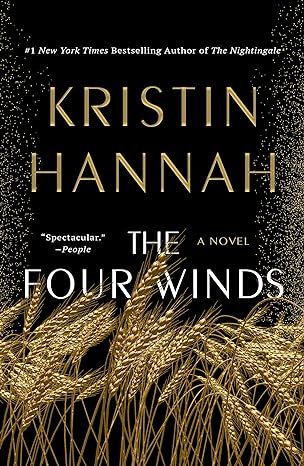
The Four Winds
4.6
-
156,242
$9.99

Winter Garden
4.6
-
72,838
$7.37

The Nightingale: A Novel
4.7
-
309,637
$8.61

Steve Jobs
4.7
-
24,596
$1.78
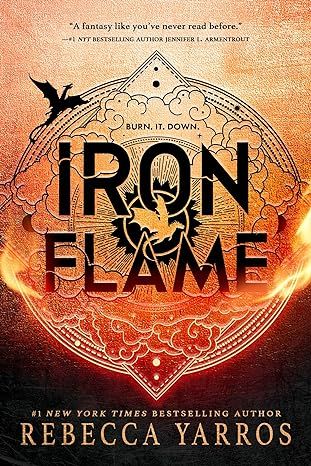
Iron Flame (The Empyrean, 2)
4.6
-
164,732
$14.99

A Court of Thorns and Roses Paperback Box Set (5 books) (A Court of Thorns and Roses, 9)
4.8
-
26,559
$37.99

Pretty Girls: A Novel
4.3
-
88,539
$3.67

The Bad Weather Friend
4.1
-
34,750
$12.78

Pucking Around: A Why Choose Hockey Romance (Jacksonville Rays Hockey)
4.3
-
41,599
$14.84

Start with Why: How Great Leaders Inspire Everyone to Take Action
4.6
-
37,152
$9.99
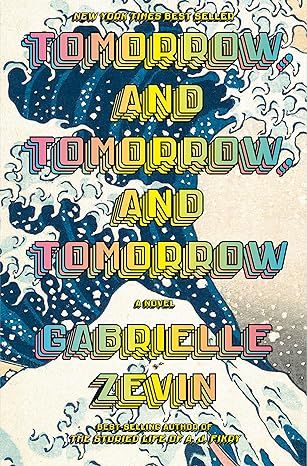
Tomorrow, and Tomorrow, and Tomorrow: A novel
4.4
-
95,875
$13.99

Weyward: A Novel
4.4
-
27,652
$11.99

Tom Lake: A Reese's Book Club Pick
4.3
-
37,302
$15.74
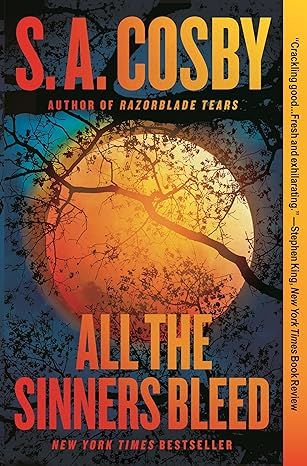
All the Sinners Bleed: A Novel
4.4
-
12,894
$13.55
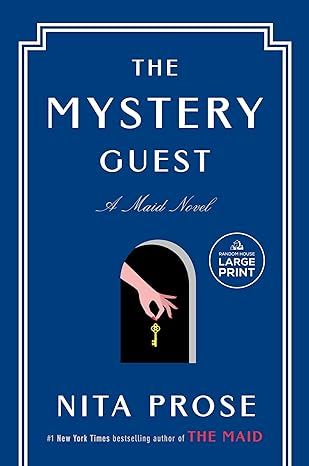
The Mystery Guest: A Maid Novel (Molly the Maid)
4.3
-
9,844
$14.99
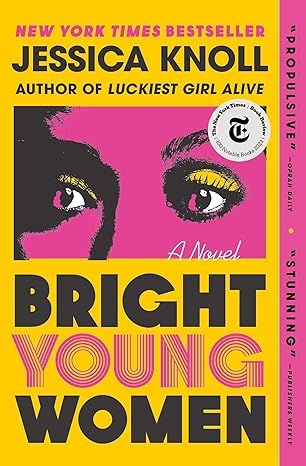
Bright Young Women: A Novel
4.2
-
8,485
$14.99

The Wager: A Tale of Shipwreck, Mutiny and Murder (Random House Large Print)
4.5
-
28,672
$14.99

Hello Beautiful (Oprah's Book Club): A Novel (Random House Large Print)
4.4
-
79,390
$14.99
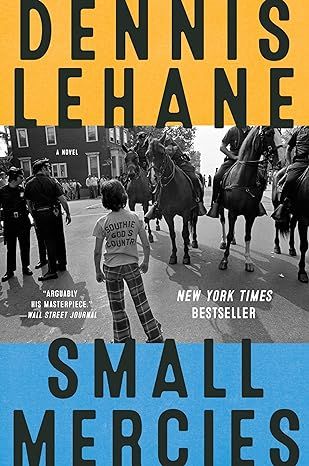
Small Mercies: A Detective Mystery
4.5
-
16,923
$10.00
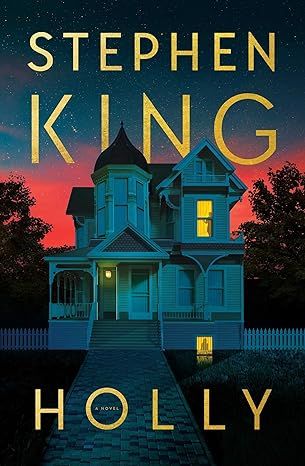
Holly
4.5
-
31,521
$14.99

The Covenant of Water (Oprah's Book Club)
4.6
-
69,712
$9.24
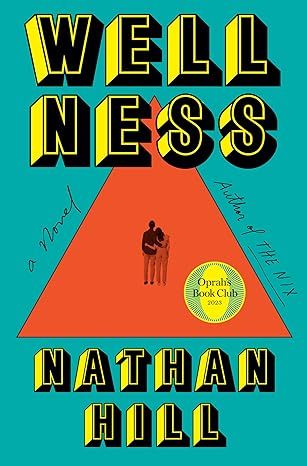
Wellness: A novel
4.1
-
3,708
$14.99
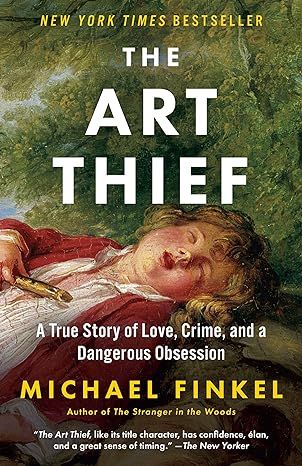
The Art Thief: A True Story of Love, Crime, and a Dangerous Obsession
4.3
-
4,805
$14.99

The Berry Pickers: A Novel
4.5
-
14,209
$14.99

Elon Musk
4.7
-
15,272
$16.99
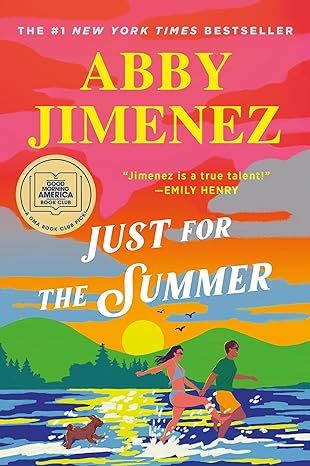
Just for the Summer
4.6
-
19,524
$11.99
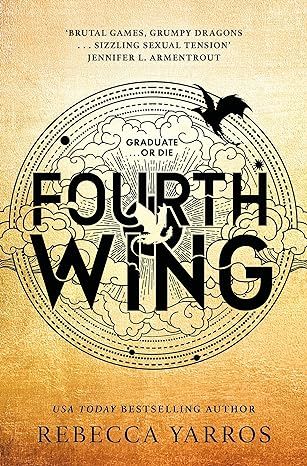
Fourth Wing (International Edition)
4.8
-
206,495
$7.95

Remarkably Bright Creatures: A Read with Jenna Pick
4.6
-
65,556
$15.80
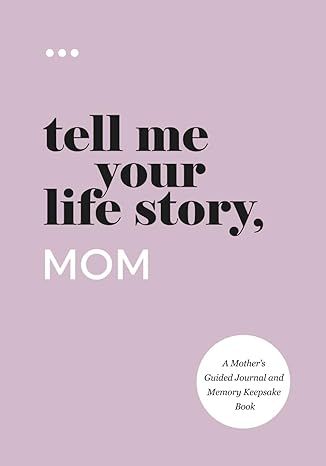
Tell Me Your Life Story, Mom: A Mother’s Guided Journal and Memory Keepsake Book (Tell Me Your Life Story® Series Books)
4.7
-
5,107
$11.24

